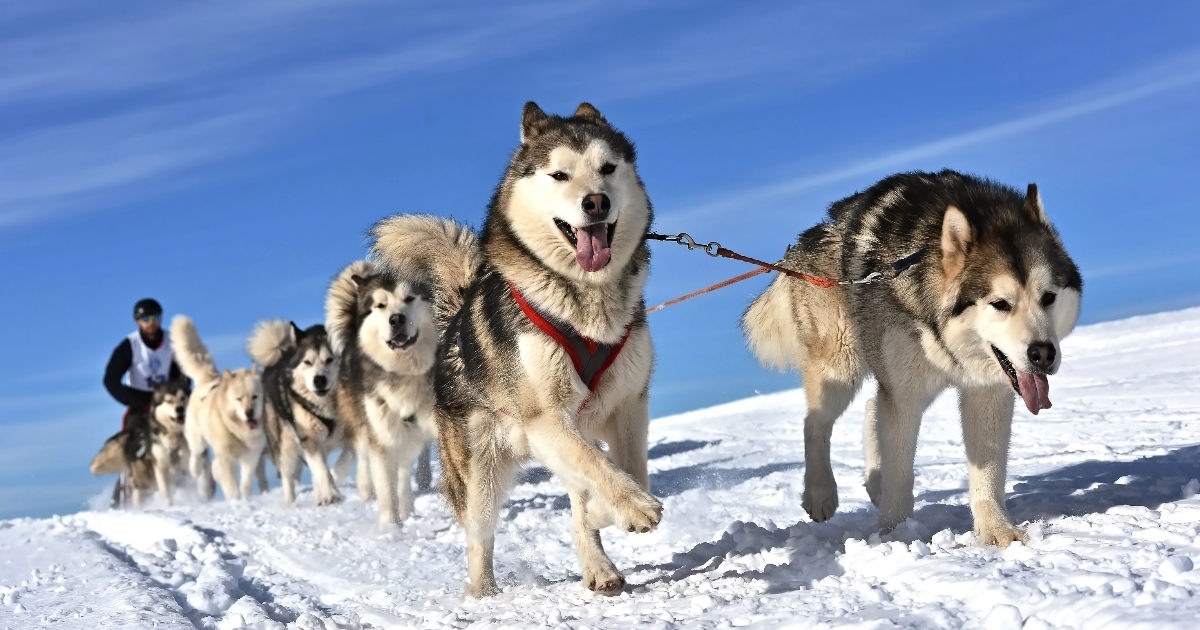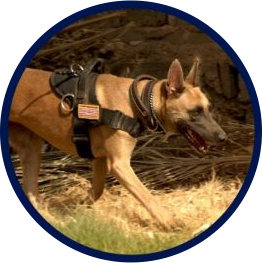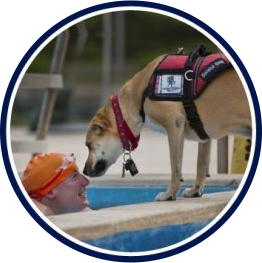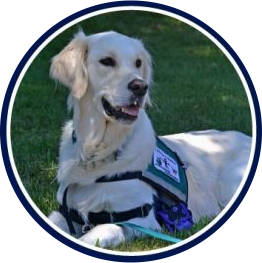
VOTING BOOTH

TRENDING

LIONS FOUNDATION OF CANADA DOG GUIDES
Lions Foundation of Canada Dog Guides and its founding program, Canine Vision Canada, was established in 1983. It’s the largest school of its kind in Canada with its training school in Oakville and breeding facility in Breslau.
What You Need To Know About Working, Service & Therapy Dogs

The difference between Working, Service & Therapy dogs
Dogs can be trained to provide a wide variety of assistance. They not only love their work but excel in their assigned tasks.
Working and service dogs have been highly trained to perform specific duties in stressful environments. The difference between working and service dogs is that working dogs often assist humans in their daily jobs, whereas service dogs perform tasks for persons with disabilities and have a legal right to accompany their owners in most areas. Therapy dogs, on the other hand, are trained to provide comfort and emotional support for individuals with psychological health issues such as anxiety or depression.
 Working Dogs: perform specific tasks with excellence, such as search and rescue, tracking and locating missing people, pulling sleds, herding, guarding, military and police duties, and cancer detection using their incredible sense of smell by sniffing people’s skin, bodily fluids or breath. They work in coordination with dedicated handlers or a small team on foot. SAR (Search & Rescue) dogs primarily detect a human scent that might be generated from skin cells, respiratory gases, or even perspiration. They apply their skills in water, avalanche and rubble searches. SAR dogs work well under pressure. They are legally allowed in all public places (except ICU). SAR dogs are often herding or sporting breeds, such as Labrador Retrievers, Springer Spaniels, Golden Retrievers, German Shepherds and Border Collies.
Working Dogs: perform specific tasks with excellence, such as search and rescue, tracking and locating missing people, pulling sleds, herding, guarding, military and police duties, and cancer detection using their incredible sense of smell by sniffing people’s skin, bodily fluids or breath. They work in coordination with dedicated handlers or a small team on foot. SAR (Search & Rescue) dogs primarily detect a human scent that might be generated from skin cells, respiratory gases, or even perspiration. They apply their skills in water, avalanche and rubble searches. SAR dogs work well under pressure. They are legally allowed in all public places (except ICU). SAR dogs are often herding or sporting breeds, such as Labrador Retrievers, Springer Spaniels, Golden Retrievers, German Shepherds and Border Collies.
 Working Dogs: perform specific tasks with excellence, such as search and rescue, tracking and locating missing people, pulling sleds, herding, guarding, military and police duties, and cancer detection using their incredible sense of smell by sniffing people’s skin, bodily fluids or breath. They work in coordination with dedicated handlers or a small team on foot. SAR (Search & Rescue) dogs primarily detect a human scent that might be generated from skin cells, respiratory gases, or even perspiration. They apply their skills in water, avalanche and rubble searches. SAR dogs work well under pressure. They are legally allowed in all public places (except ICU). SAR dogs are often herding or sporting breeds, such as Labrador Retrievers, Springer Spaniels, Golden Retrievers, German Shepherds and Border Collies.
Working Dogs: perform specific tasks with excellence, such as search and rescue, tracking and locating missing people, pulling sleds, herding, guarding, military and police duties, and cancer detection using their incredible sense of smell by sniffing people’s skin, bodily fluids or breath. They work in coordination with dedicated handlers or a small team on foot. SAR (Search & Rescue) dogs primarily detect a human scent that might be generated from skin cells, respiratory gases, or even perspiration. They apply their skills in water, avalanche and rubble searches. SAR dogs work well under pressure. They are legally allowed in all public places (except ICU). SAR dogs are often herding or sporting breeds, such as Labrador Retrievers, Springer Spaniels, Golden Retrievers, German Shepherds and Border Collies.

Service Dogs: assist people and children with needs or disabilities from visual impairment to impaired mobility. Also referred to as assistance dogs, service dogs are specifically trained to perform work for a person with a disability in order to lead an independent life. For example, guide dogs help blind or visually impaired people navigate through their environment. Medical alert dogs might signal the onset of a seizure or low blood sugar in a diabetic patient. There are four breeds that are considered to be the best service dogs, namely Labrador Retrievers, German Shepherds, Golden Retrievers, and Labrador and Golden Retriever cross.

Service Dogs: assist people and children with needs or disabilities from visual impairment to impaired mobility. Also referred to as assistance dogs, service dogs are specifically trained to perform work for a person with a disability in order to lead an independent life. For example, guide dogs help blind or visually impaired people navigate through their environment. Medical alert dogs might signal the onset of a seizure or low blood sugar in a diabetic patient. There are four breeds that are considered to be the best service dogs, namely Labrador Retrievers, German Shepherds, Golden Retrievers, and Labrador and Golden Retriever cross.

Therapy Dogs: provide love, affection, comfort and mental support to people in hospitals, retirement homes, nursing homes, schools, libraries, hospices and/or disaster areas. The most important feature of a therapy dog is temperament. A good therapy dog must be gentle, friendly, caring, patient and at ease despite the circumstances. Golden Retrievers and Labradors are the main breeds of therapy dogs.

Therapy Dogs: provide love, affection, comfort and mental support to people in hospitals, retirement homes, nursing homes, schools, libraries, hospices and/or disaster areas. The most important feature of a therapy dog is temperament. A good therapy dog must be gentle, friendly, caring, patient and at ease despite the circumstances. Golden Retrievers and Labradors are the main breeds of therapy dogs.
Improved Awareness
There are local and international legislations that protect the rights of working dogs and their owners. Educating the public and providing an awareness of the important roles of these working dogs can make a difference in society, whether it be guide dogs for the visually-impaired, service dogs for the physically disabled or support dogs for children with autism.
One thing is for sure – there is nothing ordinary about these dogs and they are best described as heroes!
Related Articles








